The child process section might be relevant or not, it might be just the amount of concurrent/parallel connections/requests but it is not even that high (50 max).
My architecture is that my main application spins up child process' on a CRON schedule. Each process that is spawned is passed a unique sports event to focus on. The CRON job is based on the start time of this event. If event times are the same, the spawn of each child process is spaced by 1.2 seconds. The number of child process' vary but the number running at any 1 time should never exceed 50. Each child process creates new connection to an internal API. The internal API only has 1 process running &, as far as I understand, cannot scale with other machines or forking child processes (as is suggested here & here) as the internal API, in turn, calls an external API which originally threw back ECONNRESETs after many requests. Since I didn't know the nature of the external APIs, I put my own in front of it to make sure all requests to the external are going through a single connection. However, now I am getting back ECONNRESETs from my internal API even if only 10 child process' have been spun up.
Connections to my internal API are kept alive to decrease response times & have a max socket count of 1 using Axios. Diagram of architecture below:
The child process' poll the internal API on a schedule so it's possible (likely) there are parallel requests being made to it. However, because these are spawned at least 1.2 seconds apart, I thought that this would decrease the likelihood of parallel requests. What is the difference between Express' ability to handle parallel requests vs their ability to handle concurrent requests? As I know that Express can handle 1000s of concurrent requests without fail.
axios.js (worker)
module.exports = axios.create({
baseURL: process.env.INTERNAL_API_ENDPOINT,
httpAgent: new http.Agent({
keepAlive: true,
maxSockets: 1
}),
httpsAgent: new https.Agent({
keepAlive: true,
maxSockets: 1
}),
timeout: 60000, // 1 min timeout
auth: {
username: process.env.INTERNAL_API_USERNAME || 'user',
password: process.env.INTERNAL_API_PASSWORD || 'pass'
},
headers: {
Connection: 'keep-alive',
'Content-Type': 'application/json',
Accept: 'application/json'
}
})
request.js
const API = require('./axios')
module.exports = async function(params) {
try {
return API.get('/api/events', { params })
} catch(err) {
throw err
}
}
event.js (internal API)
const { Router } = require('express')
const external = require('../client/betting')
const router = Router()
/**
* GET /api/events
*/
router.get('/events', async (req, res, next) => {
const { query } = req
try {
// Call to External API
const response = await external.GetEvents(query)
res.send(response.data)
} catch (err) {
next(err)
}
})
module.exports = router
This answer suggests that my internal API could be being overloaded with requests & is therefore dropping connections as a result.
What would seem to be the issue here? Is it my parallel requests that are causing the ECONNRESETs? In which case I can think of 3 potential remedies (looking for the best option really):
- I could queue the requests on my internal API side as is suggested here
- I could refactor my code to not spin up child process' &, therefore, only have 1 process & subsequently 1 connection to the API. This is not preferable as is a big architecture change but will do if it's the best suggestion
- Is there a way to scale my internal API where the child process can share the TCP connection of the master so, again, there is only 1 connection to the external? Something like cluster-client & the Leader/Follower pattern mentioned there
If none of this is clear then I can provide more clarity where needed :) thanks!

